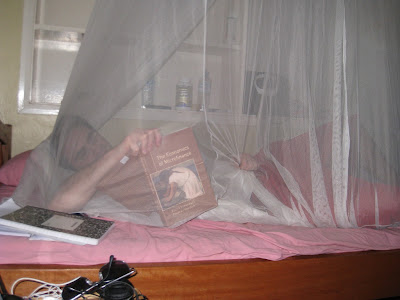Great Zcott!
While in Zimbabwe we decided to check out Great Zimbabwe, the largest pre-colonial structure in sub-Saharan Africa. There's not a lot to say about it really, the pictures really tell the story.

I don't really remember the facts unfortunately. It is dated to around the 15th (or was it 12th?) century. It is now accepted that it was built by bantu speaking peoples, despite the best efforts of white historians to ascribe it to just about anyone other than the Natives- Egyptians, Chinese, Indians, whoever.

It was thought that about 2000 people resided there in its heyday, with status determining who makes it inside the walls. It was abandoned well before the colonists arrived, for unknown reasons.
 (The walls appear to be built haphhazardy, the builders learning as they went along. Note the difference in craftsmanship between the inside wall- done first, and the outside which was finished long afterwards)
(The walls appear to be built haphhazardy, the builders learning as they went along. Note the difference in craftsmanship between the inside wall- done first, and the outside which was finished long afterwards)It was an amazing place, dwarfing and timeless. It really makes me want to see the pyramids and other great ancient structures, but that will have to be another trip. I really wish I knew more about it. Luckily the only person I know for sure is still reading this blog, my Mom, studies African history. Maybe you can shed some light on the subject?

(Great Zimbabwe is unique in that the inhatants incorporated their structure into the natural world in harmony with the surrounding landscape, rather than blasting their way through.)




Dad's reading it, too.
ReplyDeleteMom's comment, second attempt. Zimbabwe means 'stone buildings' and tradition grew out of later Iron Age practice of building cattle enclosures and ringing the homes of the wealthy with dry stone walls. The structures you are seeing were built from 1300-1450 and were designed not for defense but to enhance the power and prestige of the kings. Wealth of the kings came from trade with Kilwa on the Swahili coast, trading ivory from the elephant-rich local grasslands and gold from the western plateau. The zimbabwe were the monumental constructions of Africa akin to pyramids, Colisuem, Acropolis, etc.
ReplyDelete